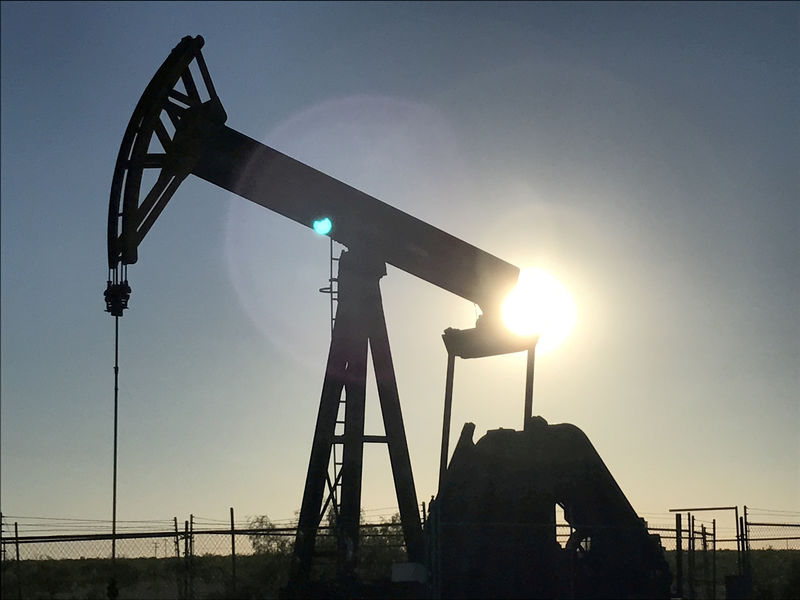By Ron Bousso
LONDON (Reuters) - A decade ago, the news that the world's top oil and gas companies had less than 12 years of production left in their reserves might have caused a panicked sell-off in their shares.
But as consumers try to move away from fossil fuels to cleaner and cheaper energy sources, investors and executives say reserve size is no longer the gold standard for measuring the value and health of a company.
The cost of developing existing reserves and the amount of carbon those reserves produce has now become more important, they say. This is leading to a profound shift in company strategies.
"The quality of reserves and the commercial viability of reserves has eclipsed the quantity of reserves by far in recent years," said Adi Karev, Global Leader for Oil and Gas at EY.
Graphic: Oil Majors reserves life - sector: https://reut.rs/2rFQjvb
The sector is emerging from one of its longest and deepest downturns after an oil price slump that started in 2014.
The largest publicly-traded oil companies -- Exxon Mobil (NYSE:XOM), Royal Dutch Shell (LON:RDSa), Chevron (NYSE:CVX), ConocoPhillips (NYSE:COP), France's Total, BP (LON:BP), Equinor (formerly Statoil (OL:STL)) and Italy's Eni -- have adapted. They saved money by cutting jobs and increasing technology spending and now make more money with oil at $60 a barrel than they did at $100.
But they also cut spending on exploration for new resources and development of new fields. This led to a decline in reserves.
An analysis by Reuters and Guinness Asset Management of the annual reports of those eight companies shows that the size of their oil and gas reserves, when added together, fell to 91 billion barrels in 2017. That was the lowest since the same amount in 2005.
The reserves of Exxon Mobil, the largest company, shrank by 16 percent since the slump began in 2014. Shell's reserves fell 6.5 percent since then despite the $54 billion acquisition of BG Group in 2016.
BP and Chevron's oil and gas reserves increased by a small 5 percent since 2014. Eni was the only one to significantly boost its reserves by over 20 percent thanks to the discovery of the giant Zohr gas field off the coast of Egypt.
The cumulative reserve life - the number of years a company can sustain its current production levels with existing reserves - of the eight companies fell to 11.7 years in 2017. That was the lowest level in at least 20 years although that drop is also the result of a sharp increase in production. Reuters does have access to data going back beyond 1998.
Exxon's reserves life shrank from 17 years in 2014 to 15 in 2017. Eni's from 10.6 to 10.1 years despite its discoveries. Shell slipped from 12 to 9 years over the period.
"There is clear deterioration (in reserves) and this will be a problem in time," according to Jonathan Waghorn, manager of the energy fund at Guinness Asset Management.
But for now, "10-12 year's reserve life should be fine, so it is not a materially important component between the Majors."
Graphic: Oil Majors' reserves life - https://reut.rs/2rxoqFz
"THE BEST BARRELS"
With electric vehicles on the ascent and a peak for fuel demand on the horizon, the focus on the reserves is shifting to the quality of the reserves rather than the quantity
"Some reserves are more efficient than others," Eldar Saetre, chief executive officer of Norwegian oil giant Equinor told Reuters.
"At some point we see a shrinking oil and gas industry, when that will be I do not know, but then it is really important that the best barrels come in and that will be increasingly a competitive factor."
Some companies are already changing strategies to adapt to the new focus.
Oil prices are not expected to rise sharply in the long-term and governments are seeking to reduce pollution and greenhouse gas emissions. This means firms are adjusting by setting ceilings for the cost of projects, often below $35 a barrel. Oil reached a $80 a barrel this month, the highest since late 2014.
Crude oil and natural gas have different grades and the cost of pumping them can vary hugely. Saudi Arabia's oil is easier and therefore cheaper to extract than Angola's complex deepwater wells.
Canada's oil sands have become less attractive due to their high cost of extraction and high carbon intensity. Exxon wrote down a large part of its Canadian oil reserves in 2017. Its largest rival, Shell, has sold most of its Canadian assets in recent years.
North American shale which has emerged over the past decade can be developed relatively quickly and at low cost, in contrast to multi-billion dollar deepwater projects that take years to develop.
The Permian basin in Texas, the heartland of the shale oil boom in recent years, saw production costs drop sharply to as low as $30 a barrel.
Exxon and U.S. rival Chevron have both acquired large acreage in the Permian in recent years. Shell is also expanding in U.S. shale.
The Gulf of Mexico also has low extraction costs because it has large reservoirs of oil and some infrastructure is already located there such as services companies and onshore bases.
Statoil and Total have bought exploration acreage in the U.S. Gulf of Mexico in recent months.
Brazil's pre-salt reserves also have low costs as there are huge reservoirs and also some existing infrastructure. All eight companies are there and several have recently sharply increased their production in the basin.

"We are now getting to the point that the focus on efficiencies and producing reserves at a low level is what investors expect," Karev said.